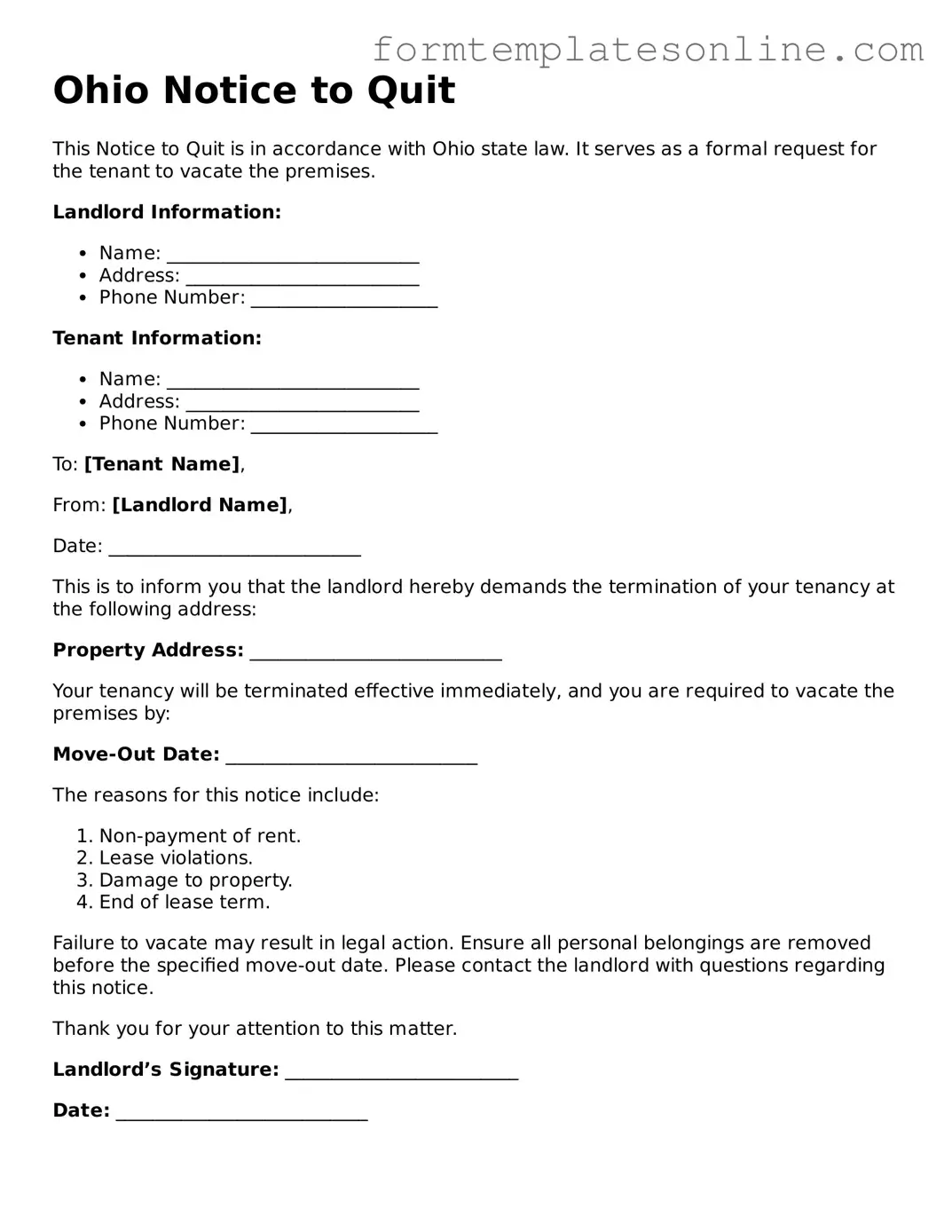Ohio Notice to Quit
This Notice to Quit is in accordance with Ohio state law. It serves as a formal request for the tenant to vacate the premises.
Landlord Information:
- Name: ___________________________
- Address: _________________________
- Phone Number: ____________________
Tenant Information:
- Name: ___________________________
- Address: _________________________
- Phone Number: ____________________
To: [Tenant Name],
From: [Landlord Name],
Date: ___________________________
This is to inform you that the landlord hereby demands the termination of your tenancy at the following address:
Property Address: ___________________________
Your tenancy will be terminated effective immediately, and you are required to vacate the premises by:
Move-Out Date: ___________________________
The reasons for this notice include:
- Non-payment of rent.
- Lease violations.
- Damage to property.
- End of lease term.
Failure to vacate may result in legal action. Ensure all personal belongings are removed before the specified move-out date. Please contact the landlord with questions regarding this notice.
Thank you for your attention to this matter.
Landlord’s Signature: _________________________
Date: ___________________________
